9 /10 1 Votes9
8.8/10 IGN Series Icewind Dale | 9/10 Steam Distributor(s) Wizards of the Coast Initial release date 29 June 2000 | |||||||||||||||||||||||||||||||||
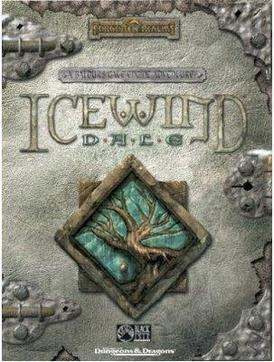 | ||||||||||||||||||||||||||||||||||
Publisher(s) Interplay EntertainmentMacPlay (OS X) Producer(s) Chris ParkerDarren L. Monahan Programmer(s) Jacob DevoreThomas FrenchDavid Ray Artist(s) Timothy DonleyBrian MenzeAaron Meyers Similar Black Isle Studios games, Role-playing video games | ||||||||||||||||||||||||||||||||||
Icewind dale review
Icewind Dale is a role-playing video game developed by Black Isle Studios and originally published by Interplay Entertainment for Windows in 2000 and by MacPlay for OS X in 2002. It takes place in the Dungeons & Dragons Forgotten Realms campaign setting, and is based on the 2nd edition ruleset. The player begins the game by creating an adventuring party, which becomes enlisted as a caravan guard in the wake of strange events. As the story progresses, the player learns of a demonic feud that threatens the Ten Towns of Icewind Dale.
Contents
- Icewind dale review
- Let s play icewind dale enhanced edition 01 so cold
- Gameplay
- Plot
- Development
- Release
- Reception
- Remake
- References
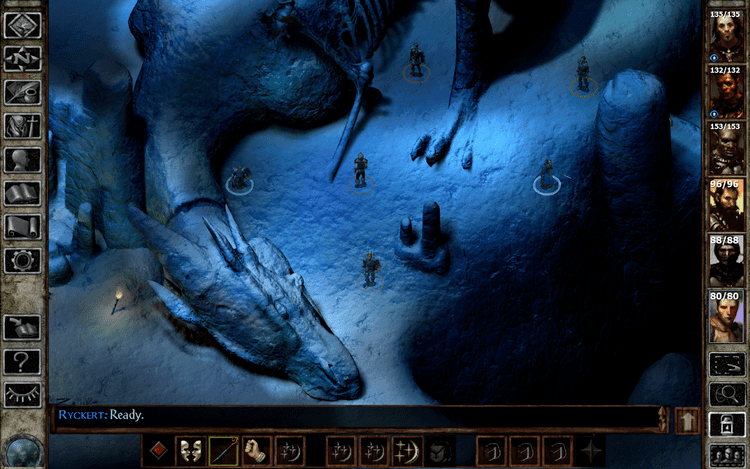
Icewind Dale received positive reviews, being praised for its musical score and gameplay. An expansion to the game, Icewind Dale: Heart of Winter, was released in 2001, and the sequel, Icewind Dale II, followed in 2002. A remake Icewind Dale: Enhanced Edition by Overhaul Games was published for several computer and mobile platforms in 2014.
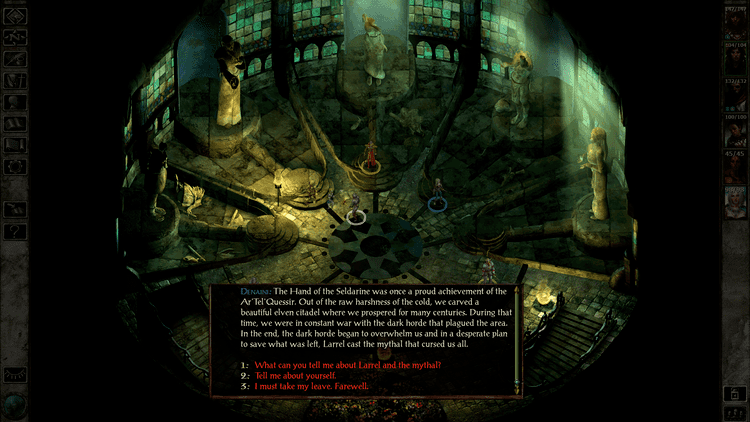
Let s play icewind dale enhanced edition 01 so cold
Gameplay
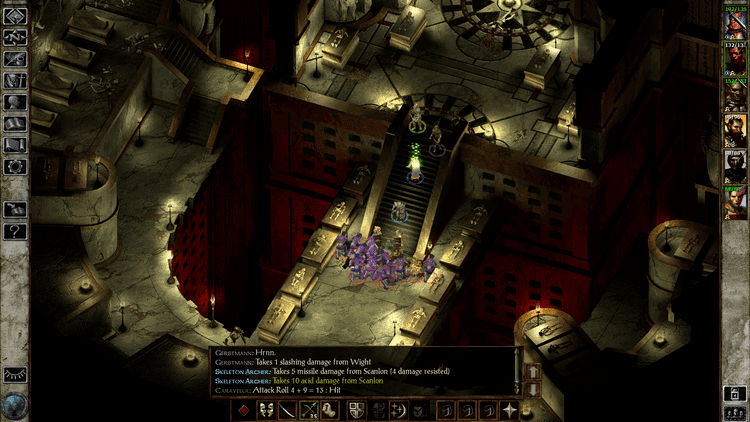
Icewind Dale's gameplay incorporates a modified version of the Advanced Dungeons & Dragons 2nd edition ruleset. The rules' intricacies are automatically computed; the game keeps track of statistics and controls dice rolling.
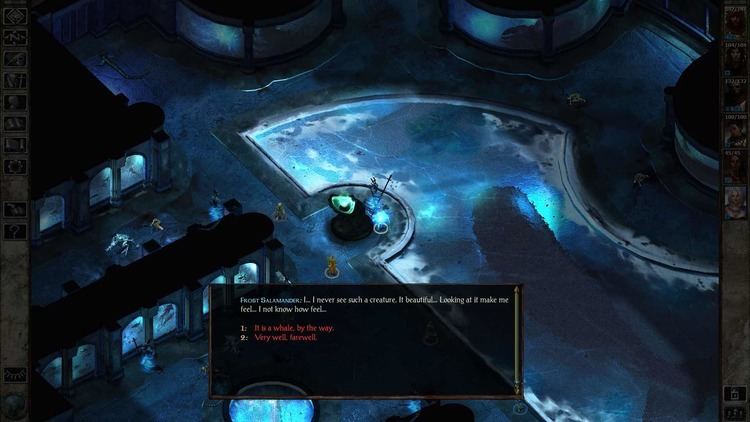
The player begins the game by creating an adventuring party of up to six characters. During character creation, statistics including name, gender, race, class, ability scores and weapon proficiencies may be altered. Spellcasters and thieves have additional statistics to manage (in the form of spells and thief abilities, respectively).
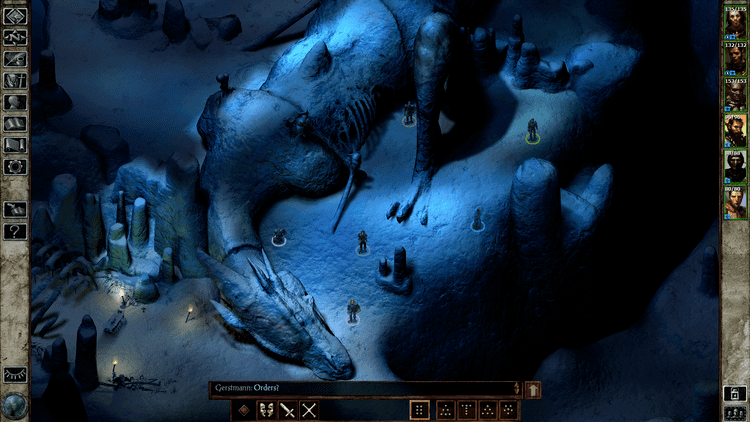
After a character has earned enough experience points through completing quests and defeating enemies, the player is able to level up that character. The player may alter several statistics in this process, while others are automatically upgraded. Certain character classes require less experience than others to achieve a new level. An experience point limit of 1,801,000 is in place for all characters, meaning certain classes are able to reach higher levels than others.

The player may order characters to engage in movement, dialogue and combat. Combat occurs in real-time, as opposed to a turn-based system. The player may pause the game at any time, and during a pause may give the party orders which will be carried out when the game is resumed. Gameplay is focused mainly on combat, often against large groups of enemies. The game also features a journal system that archives all text dialog with non-player characters.
Plot
Icewind Dale does not follow the events of R. A. Salvatore's The Icewind Dale Trilogy novels, as it takes place in a different century. The game begins in the town of Easthaven, where the player's party of adventurers is resting at a tavern. The town's leader, Hrothgar (voiced by Jim Cummings), invites the party to investigate the town of Kuldahar, which has recently sent word of strange happenings. On the road to Kuldahar, the group is ambushed by frost giants, who cause an avalanche. Save for the player's party, the entire expeditionary force is crushed, and the way back to Easthaven is blocked.
The party continues on to Kuldahar, where they meet Arundel (Jim Cummings), the village's archdruid. The druid explains that a mysterious evil force has been causing abnormal weather patterns and monster behavior, and kidnapping villagers. As a result of these disturbances, the magical warmth surrounding the giant tree under which the town is built has begun to recede. Arundel sends the party to discover the source of the evil before the tree dies, and Kuldahar is destroyed. Following Arundel's advice, the party first goes to the Vale of Shadows, an area containing Kuldahar's crypts, due to rumors of undead creature sightings. However, a cursed barbarian spirit named Kresselack (Tony Jay) residing in the Vale of Shadows informs the player that the threat to Kuldahar is not present in the area. The party returns to Arundel, who asks them to retrieve an ancient scrying item called the Heartstone Gem, so he may discover the source of the evil more quickly.
The player's party travels to a temple Arundel believes houses the gem, but finds it had been attacked recently, and the gem stolen. Arundel discovers that the attackers' lair lies within the caverns of Dragon's Eye, and the party travels there to retrieve the gem. After making their way through a network of tunnels, the party finds a powerful demonic creature named Yxunomei (Tara Strong). Yxunomei claims to be using the Heartstone Gem for personal reasons, and mentions a vendetta and age-old war with someone she sarcastically referred to as an "old friend." After slaying Yxunomei and retrieving the Heartstone Gem, the player returns to Kuldahar, and finds it under attack. The player converses with a shapeshifter disguised as Arundel, who reveals that he was the one Yxunomei had mentioned, and that the real Arundel is dying in another section of the hut. After the shapeshifter vanishes, the player locates the real Arundel, who tells the party to take the Heartstone Gem to Larrel (Michael Bell) at the fortress of the Severed Hand, as he is now the only one capable of using it.
The party arrives at the fortress, discovering that Larrel had gone insane. Larrel brokenly mentions something about freeing his cursed people, along with a hint on how to go about it. After completing his task, Larrel regains his sanity and uses the Heartstone Gem to discover the source of the evil, which apparently resides in the dwarven city of Dorn's Deep. After carving their way through Upper Dorn's Deep, Wyrm's Tooth, and Lower Dorn's Deep, the party at last reaches Brother Poquelin (John Kassir), the primary villain of the game. Poquelin explains that he arrived in the material plane because his superiors exiled him from his home plane. He called his vendetta with Yxunomei "out of control." Poquelin had predicted Yxunomei would follow him to the material plane, so he had sought a base of operations in order to begin a military force capable of crushing her. While he was doing so, he stumbled upon the ancient artifact Crenshinibon, which he claims had been "calling" to him.
Using its power of attracting evil-intentioned creatures, Poquelin began amassing an immense army with which to conquer the lands of Icewind Dale. He claims everything was going as planned until Hrothgar's expedition had set out to investigate Yxunomei's activities in the area around Kuldahar. He used his frost giant minions to cause the avalanche to crush the expedition. Apparently, he did not see the player's party as a threat until they stole the Heartstone Gem from Yxunomei, to which he responded by killing Arundel, the only person he thought would be capable of using it. Although the party discovered his location by taking it to Larrel, Poquelin wasn't bothered, as he was amassing his forces outside of Easthaven at the same time. After combating Poquelin, he teleports the party back to Easthaven, which is now in ruins. After freeing the surviving villagers and speaking with a local cleric of Tempus, the party makes its way to Poquelin's lair—Easthaven's temple, which has been enveloped by a Cryshal-Tirith (meaning "crystal tower" in the Elvish language), courtesy of Crenshinibon.
In the end, it is revealed that Poquelin's true intention was to reopen Jerrod's Stone (a portal to the Nine Hells of Baator created long ago), so he could conquer the North with an army of devils at his command. Although he successfully opens the portal, the local cleric of Tempus hurls himself into it just as its namesake did, sealing it off at the cost of his own life. This buys the party enough time to fight Poquelin, who has reverted to his true form: the devil Belhifet. After defeating Belhifet and banishing him back to the Nine Hells, the Cryshal-Tirith collapses, and the party barely escapes in time. Easthaven begins reconstruction as the game ends. In a twist ending, the game's narrator (David Ogden Stiers) and Belhifet are revealed to be one and the same. The demon implies that his mandatory century of imprisonment (after his defeat at the hands of the player's party) is close to an end and that he will soon walk the Prime Material Plane once more in Baldur's Gate: Siege of Dragonspear.
Development
Icewind Dale is based on the BioWare Infinity Engine, featuring pre-rendered backgrounds and sprite-based characters displayed with an isometric camera perspective. This engine was used to power Black Isle Studios' previous games Planescape: Torment, Baldur's Gate, and others.
Release
Icewind Dale was originally released on June 29, 2000 for Windows by Interplay Entertainment, and on March 26, 2002 for OS X by MacPlay. An expansion to the game, Icewind Dale: Heart of Winter, was released in 2001.
The game and its expansion were re-released in two budget packages in 2002, entitled Icewind Dale: The Collection and Icewind Dale: Complete. They were re-released once again in 2002 alongside Baldur's Gate and Planescape: Torment in Black Isle Compilation. A collector's edition called Icewind Dale: The Ultimate Collection, which included the sequel Icewind Dale II and its expansion, was released in 2003.
All four games were released again in Black Isle Compilation - Part Two in 2004, in Ultimate Dungeons & Dragons in 2006, and in Atari's Rollenspiele: Deluxe Edition in 2007. Icewind Dale was once more re-released on October 6, 2010, complete with expansion packs on GOG.com.
Reception
Icewind Dale was well received by critics, scoring 86% from GameRankings and 87/100 from Metacritic. GameSpot's Greg Kasavin gave the game 86%, opining it is "well suited for fans of Black Isle Studios' previous games, classic hack-and-slash AD&D computer games, and anyone looking for an action-packed role-playing game with a lot of depth." IGN scored it 8.8/10 and GameZone gave it 9.5/10. According to GameSpy's Allen Rausch, "Icewind Dale was a fun dungeon romp that can hold its head up high, even if it can't match its big brothers." The game's music score by Jeremy Soule received widespread critical acclaim. Chris Chan of the New Strait Times said the game was one of the best he would ever played, and went on to positively compare it with the "overhyped" Diablo II.
The strongest criticism was that the gameplay was too uniform and was mostly combat-focused, with little interaction or investigation. Bob Low of the Daily Record noted technical issues such as poor pathfinding and occasional crashes. PC Zone criticized its similarities to previous Infinity Engine games.
Ian Williams of Paste rated the game #3 on his list of "The 10 Greatest Dungeons and Dragons Videogames" in 2015.
Remake
A remake of Icewind Dale was developed by Beamdog's Overhaul Games and published by Atari for Windows, OS X, Linux, Android, and iOS in 2014.
